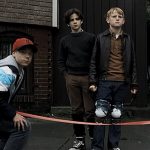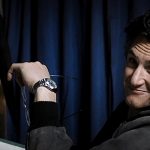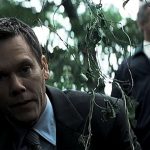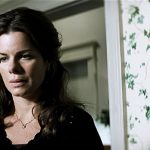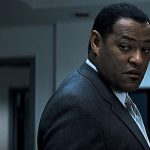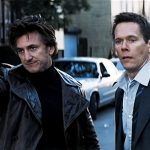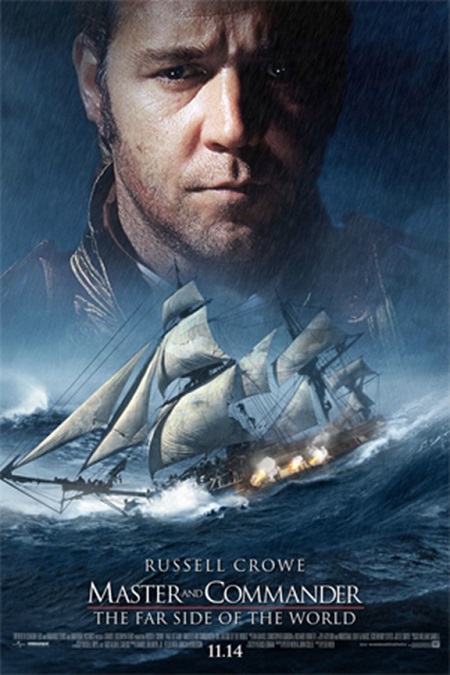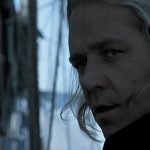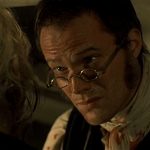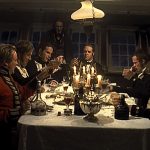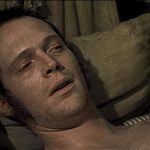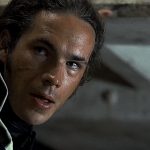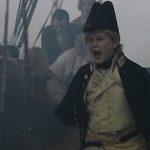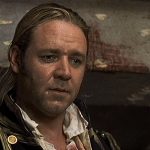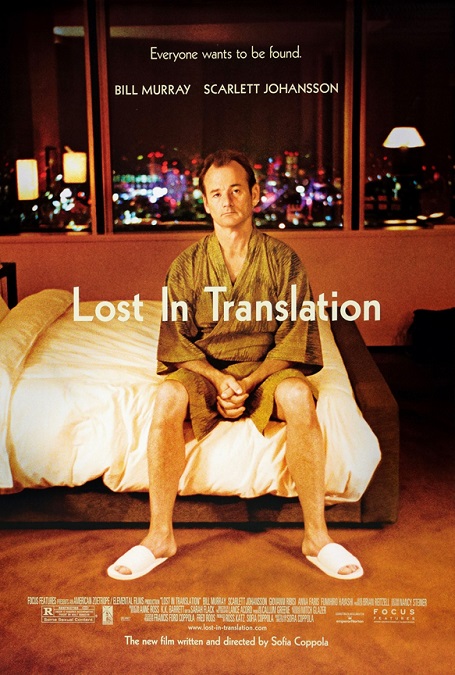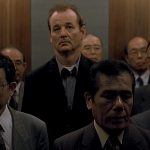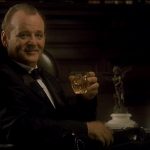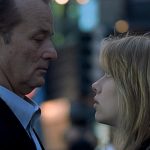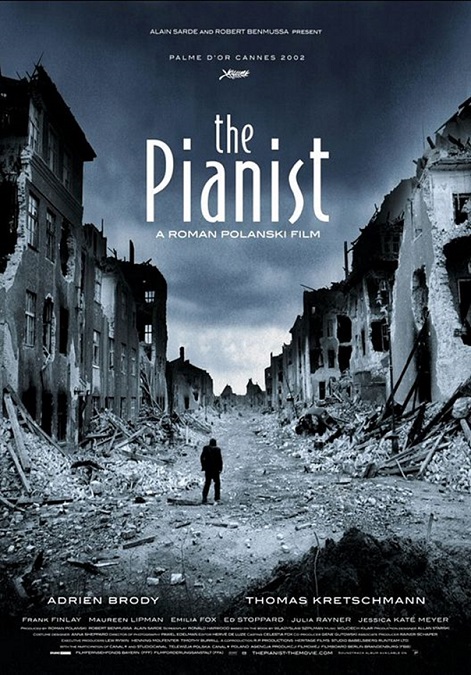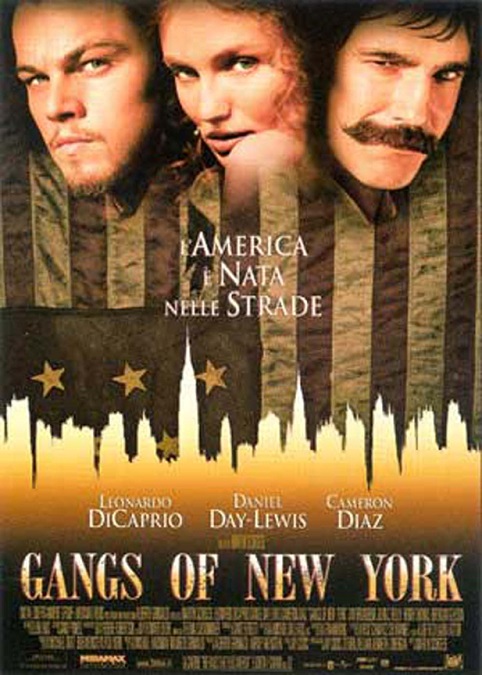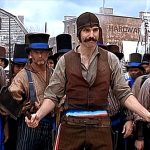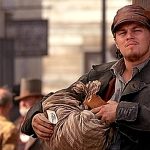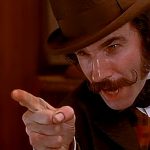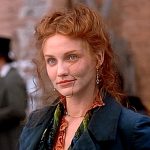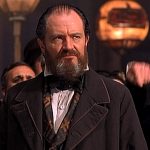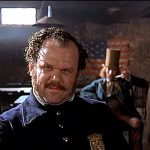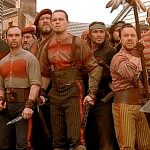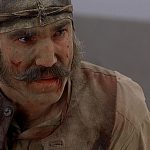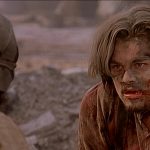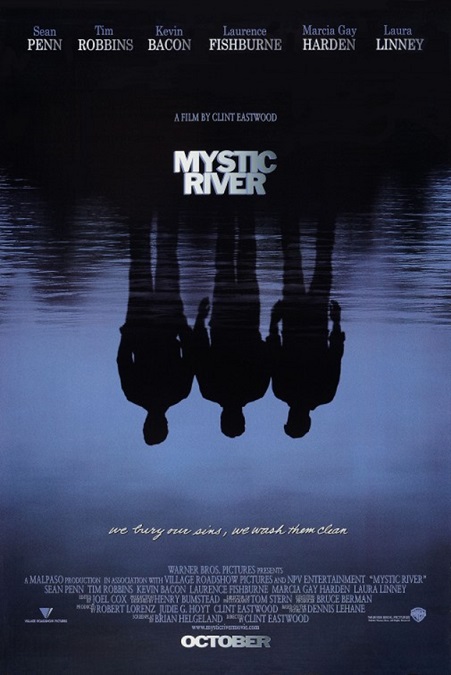
Mystic River – 2003
Director Clint Eastwood does it again with this emotionally complex crime drama. It has a great cast, interesting characters, a captivating plot, and a wonderfully engaging pace. The movie stars Sean Penn, Tim Robbins, Kevin Bacon, Marcia Gay Harding, Laura Linney, and Lawrence Fishburne. The movie draws you in right from the very beginning and doesn’t let you go until the final moment. This was a murder mystery done right.
Before getting into the main plot, I have to describe the horrifying scene at the beginning of the film, the child abduction scene. Three boys, Jimmy, Sean, and Dave, are playing in the street when a man steps out of a car to scold them for writing their names in wet cement. He has a badge in his hand and a pair of handcuffs hanging from his belt. He tells the child who does not live in the area to get into the car. He is going to take him home and have a talk with his mother about defacing public property. They were kids. How were they to know that the man wasn’t a police officer? I knew right away that they were abducting the boy. Just the thought of how plausible and easy the abduction was disturbed me.
But the kid escapes and then we flash forward to when he is an adult. Robbins played Dave Boyle. He has grown into a man with deep emotional scars caused by his four days being sexually abused by the child rapists. He is married to Celeste, played by Harden. Celest’s relative, Annabeth Markum, played by Linney, is married to Jimmy Markum, played by Penn. Jimmy is an ex-con with a nineteen year-old daughter named Katie, played by Emmy Rossum. When Katie is found brutally beaten and murdered, police investigator Sean Devine, played by Bacon, and his partner, Detective Whitey Powers, played by Fishburne, take the case.
The three childhood friends who had drifted apart are now drawn back together. Dave, who had come home from a bar at which Katie had been drinking the night of the murder, with blood all over his clothes and abrasions on his hand, quickly becomes one of the prime suspects. The mystery kept me guessing until the very end. The twists and turns of the investigation very well thought out.
So, in the end, who did it? The murderer came out of left field, but it made sense. Katie had been planning to run away with her secret boyfriend, Brendan Harris, played by Tom Guiry. His mute brother, Silent Ray, played by Spencer Treat Clark, was upset that Brendan, the only person who didn’t treat him like a freak, was planning on leaving. To prevent that, he killed Katie, though the film indicated that it may have been an accident.
And the ending of the movie was powerful. Believing that Dave had murdered his daughter, Jimmy and his thug friends, the Savage brothers, Val, Nick, and Kevin, played by Kevin Chapman, Adam Nelson, and Robert Wahlberg, corner Dave and execute him. After the deed was done, Sean arrives and tells Jimmy that Katie’s real killer had been apprehended and had given a full confession, Jimmy realizes that he had killed an innocent Dave, except that Dave wasn’t really innocent. He had killed a man the same night Katie died. It was a pedophile, which made sense, considering the nature of his own abduction experience.
By far, the most interesting character was Dave. The emotional damage which Tim Robbins portrayed was perfectly played. He took home the Oscar for Best Supporting Actor and I think he deserved it. Sean Penn took home the Oscar for Best Actor, though his character, while complex, didn’t require such an extreme emotional range. Neither did Bacon. But I also have to make special mention of another member of the cast who was nominated for Best Supporting Actress, Marcia Gay Harden. I thought her performance as Dave’s scared but devoted wife was incredibly well-played. There was a clear fragility and vulnerability about her that was believably executed.
The movie was also notable for its score. It was written by the same man who directed the film, Clint Eastwood. In fact, the movie was nominated for six Academy Awards. In addition to Best Picture, Best Actor, and Best Supporting Actor, it was nominated for Best Director, got a Best Supporting Actress nomination for Marcia Gay Harden, and a nomination for Best Adapted Screenplay. Penn and Robbins took home the only wins.
And finally, I have to make mention of Laura Linney’s strange little character. Jimmy’s wife, who was largely a silent character throughout most of the movie, had her little moment at the end. Jimmy, having learned that Katie’s real killer had been caught, comes close to admitting to Sean that he had murdered Dave. In a state of depression, he goes to his wife and confesses his crime to her. She tells him that she loves him for what he did. His crime says that her husband is a man who will stop at nothing to protect his family. That’s messed up, Annabeth.
